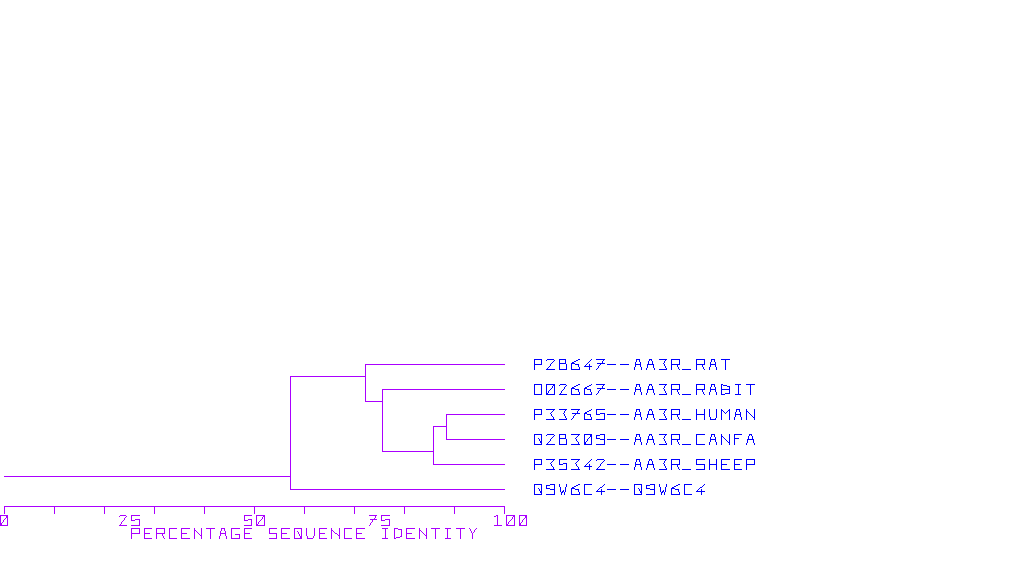Adenosine Receptor A3
![]()
Adenosine receptors were initially classified into A1 and A2 subtypes based on pharmacological and functional criteria. In 1991, a third subtype, the A3 receptor, was isolated from a rat testis cDNA library (Meyerhof et al., 1991). Its identity was subsequently confirmed on the basis of binding and second messenger studies (Zhou et al., 1992). This receptor is negatively coupled to adenylyl cyclase and has been localized to the testis, lung, kidneys and heart. The high level of expression in testis suggest that this receptor might play a role in reproduction. This receptor has now been cloned from a number of species including human, rat, and sheeps (Olah and Stiles, 1995). these clones code for a protein of about 320 amino acids and display between 40% and 50% overall amino acid identity to the A1- and A2ARs.
A3 receptor had striking characteristics in that adenosine receptor agonists had
relatively low affinity compared to other ARs and, as might be anticipated, a
very different potency series than that observed for A1ARs or A2ARs.
Databases of A3 adenosine Receptor
| RNGPCR | A3-Adenosine Receptor | Rattus norvegicus | |
| RATADENREC | A3-Adenosine Receptor | Rattus norvegicus | |
| S65334 | A3-Adenosine Receptor | Ovis aries | |
| HUMA3ADENR | A3-Adenosine Receptor | Homo sapiens | |
| HUMHAAR | A3-Adenosine Receptor | Homo sapiens | |
| MUSGPCR2 | A3-Adenosine Receptor | Mus musculus | |
| CFU54792 | A3-Adenosine Receptor | Canis familiaris | |
| RSPA3I | A3-Adenosine Receptor | Rattus norvegicus | |
| HUMADOR01 | A3-Adenosine Receptor | Homo sapiens | |
| HSRADRA3 | A3-Adenosine Receptor | Homo sapiens | |
| AF115332 | + | A3-Adenosine Receptor | Gallus gallus |
| AF102804 | + | A3-Adenosine Receptor | Rattus norvegicus |
| AF069778 | + | A3-Adenosine Receptor | Mus musculus |
For up to 20 representative sequences

![]()